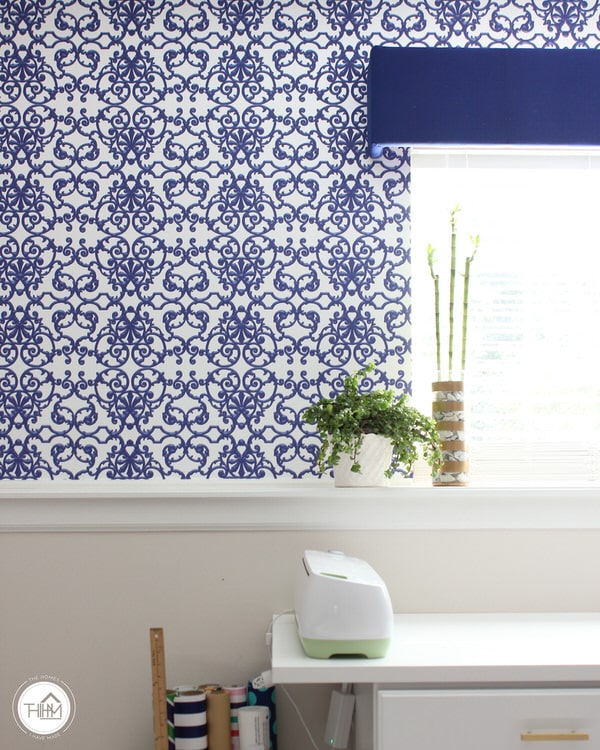Overlap and cut both pieces at the same time, Reduce the middle of the overlap, Lap one panel over the other, and cut down the middle of the overlap. Angle the knife blade down low so more than just the idea of the blade is doing the cutting. In some cases, instead of butting one panel up to another, you'll need to develop your own seam.
Bob chooses a 10-in. knife so he doesn't have to move it as typically as he would a smaller sized one. Hold the knife down close to the wall to avoid cutting into the ceiling. Make relief cuts prior to trimming, Utilize a scissors for relief cuts, Use a scissors rather of a knife to prevent accidentally cutting into wood trim and other barriers.
/cdn.vox-cdn.com/uploads/chorus_asset/file/19494142/howto_wallpaper_01_copy.jpg)
Job details Ability 3 out of 5 Moderate Not so bad for somebody with perseverance and accuracy, which are crucial to hanging paper directly, plumb, and perfectly lined up. Wallpaper initially appeared in the 16th century, in the kind of black-and-white hand-blocked prints, and it stays a preferred way to bring color, texture, and character to a home.
Some Ideas on How To Install Peel And Stick Wallpaper - Wallpops You Need To Know
According to John Dee, these are much easier to work with than more fragile and tear-prone plain paper, and generally come pre-pasted, removing the requirement to roll on starch-based adhesives. They can, nevertheless, be harder to cut and need bonding with vinyl-to-vinyl adhesive. Tip: Silk, turf, fabric, and textured documents also need careful attention during installation: "You definitely can't get paste on their faces," Dee says.

Measure the width and height of this wall and mark its midpoint. Mark the wall at the paper's leading edge, the edge against which the next strip will hang.
To offer the adhesive an opportunity to activate, carefully fold over both ends of the strip, bewaring not to crease the paper, so that they fulfill in the middle; this process is referred to as "reservation." Make certain the paper's edges are exactly aligned so that no pasted surface is exposed (companies that install wallpaper).
Some Known Factual Statements About How To Install Wallpaper (Diy) - Family Handyman
For pre-pasted paper, loosely roll up a strip with the adhesive side out and immerse it in a trough of cold to lukewarm water, depending upon the maker's instructions, just until the paper is completely wet (but no longer). Book the paper as above for 3 to 5 minutes. Step 4: Hang the First Strip Take the booked strip to the wall, then unfold and use the leading half, aligning one edge with the plumb line in Action 2.
Overlap a patterned paper as needed so that the primary design component is centered on the midpoint of the wall section. First, smooth the edges of the paper with a moist sponge, then brush gently from the center of the strip to its edges. Next, carefully pull (do not push) a smoother across the paper to get rid of wrinkles and anchor the paper to the wall.
Step, cut, and hang each subsequent strip, moving them up or down on the wall to line up the pattern and to butt seams firmly with no overlaps. Step 6: Wallpaper the Corners Corners are the only locations where strips overlap. For an inside corner, procedure from the corner to the top, middle, and bottom of the last-pasted strip.
Little Known Questions About Love Vs Design: Wallpaper - New Super Cute 2021 Designs.
Using a level, cut a dry strip to that width, cutting the edge that'll meet the corner. Hang the paper so the just-cut edge turns the corner and extends onto the adjacent wall. Position the adjacent strip with its edge inside the corner, overlapping the previous strip; align the patterns.

Utilizing the line as a guide, hang this strip. For outdoors corners, cut the strip to cover over the next wall by inch. Hang the next strip so it overlaps the previous piece but lands short of the corner. This avoids the paper from peeling if someone brushes against the corner.
From the paper's waste edge to the corners of the trim, make diagonal cuts with scissors to allow the paper to lay flat on the wall. Eliminate the bulk of the overlap with scissors. Smooth the paper as in Action 4, then use the smoother to press the paper comfortably against the casing, the ceiling, and the baseboard.
Some Known Details About How To Get Rid Of (And Avoid) Wallpaper Bubbles - The Home ...
Step 8: Trim Around Window Apron To trim around a window's stool and apron, make a series of routes from the waste edge of the strip toward the corner where wall and stool fulfill. These narrow fingers of paper allow the strip to be shaped to the profile of the case.
Get step-by-step guidelines on how to hang embossed and standard wallpaper - wallpaper hanging companies.
• have a peek at these guysuse this linkRecommended Site